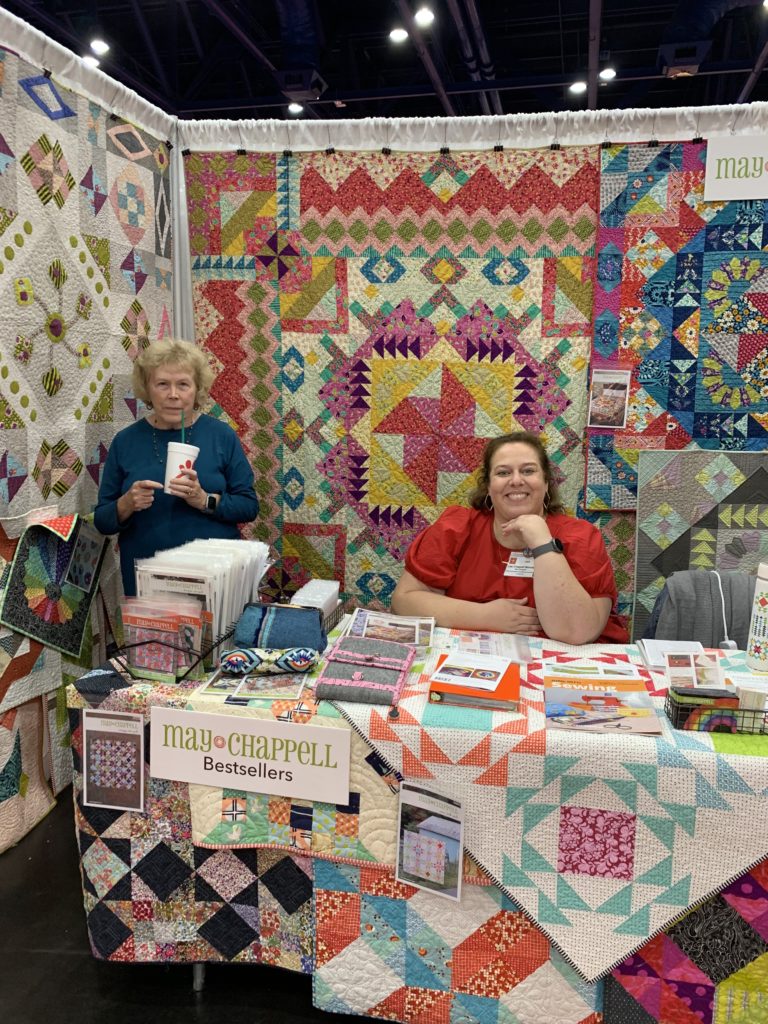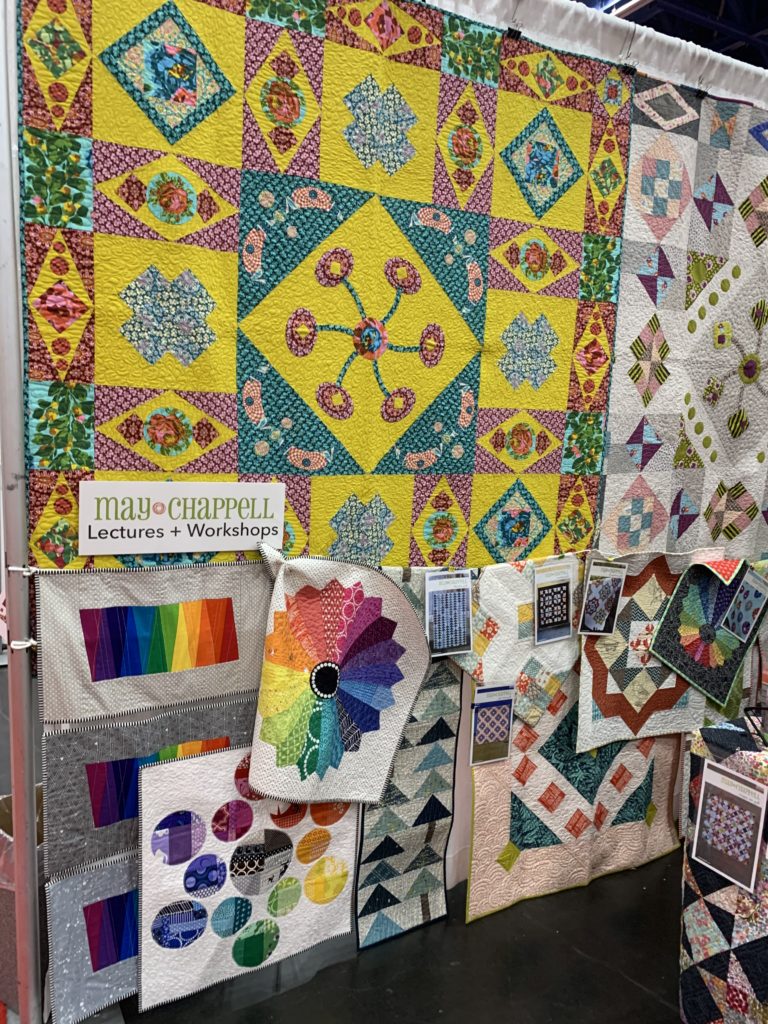May Chappell
Nothing Lost in Translation

Visit Website

Lee Chappell Monroe’s conversation is peppered wit made-up words. She describes her brother’s skills as “computer” and “mathy,” and her mom’s sewing tips as “garment.” The context makes their meaning clear, but when Monroe filmed a Craftsy class on tips and tricks for quilting efficiency she told quilters they could “gooch” the block over a bit. The producers had her rerecord it. “They said I could say ‘move’ or even ‘scooch,’ but ‘gooch’ was going to confuse international viewers,” Monroe recalls with a laugh. “It wasn’t easy to look up on Google translate!”
There are no translation problems, however, when it comes to the patterns Monroe designs for her company, May Chappell. Monroe strives to write quilting instructions that are clear and accessible to quilters of every skill level. Her teaching is the same. “I teach from my patterns, and the classes include a lot of precision piecing—ways to not cut the tips of triangles or to piece Flying Geese unit onto a half-square triangle and have it be seamless, for example,” she says.
When did you start quilting and designing?
My mom is a big sewer and it was important to her that I learned and so I made clothing when I was younger. I sewed my first quilt when I had my first apartment and saw a quilt I liked in the Pottery Barn catalog, but I didn’t have a Pottery Barn budget. I thought, quilting can’t be that hard, and used fabrics from my mom’s stash to use one. So my first quilt contains scraps from dresses and things she had made me through the years. I kept making quilts and after a while my local quilt shop asked me to teach a class on choosing colors—my background is in fine art and graphic design and I had my own graphic design firm—and when that was finished everyone said, “What’s your next class?” I decided to design a pattern to teach and that was the beginning. I totally owe my local shop owner!
How can your patterns benefit shop owners?
I love to teach and do so in North Carolina, where I’m from, and around the country. I don’t publish a pattern until I’ve taught it several times, so my patterns make great classes and include a lot of tips and tricks that I learn while teaching them. I also make my patterns a reasonable length. It’s easy to write a 50-page pattern, but not so easy to write one that’s four pages.
My first pattern, “Designer’s Star,” is still one of my most popular and makes a great class for teaching value. You can make that pattern over and over and change the emphasis by changing values.
My website includes numerous tutorials, many of which make great classes or can be completed the tutorial at home. To make it simple for shop owners to inexpensively kit these projects, I’ve created PDF checklists for each tutorial that print four to a page and have a blank spot for the shop to drop in their logo. These can be included with the items needed for each project. Most shops who kit these projects also carry my quilt patterns and the tutorials give sewers a good idea of the aesthetic of my patterns and the quality of the instructions.
PDF checklists are also available for kitting May Chappell patterns, and if shop owners are planning to make a sample one of my patterns, I’m happy to supply them with a PDF of the pattern. All they have to do is send me an email request.
In addition to teaching piecing classes, I’m a Bernina ambassador and quilt most of my quilts—up to full size—on my domestic machine, so I can teach quilting, too. I love designing patterns, but teaching gigs are my favorite part of my job.
Who is your company named after?
I’ve been called May many times, but May Chappell is actually my mom’s grandmother. She was a great quilter and I named the business after her in homage to the idea of sewing and quilting being passed through female generations. My mom is an amazing sewer—I call her The Guru—and she helps me sew every week. She’s made wedding dresses and wool coats and all my dad’s dress shirts. When I’m working on a bag and have a problem, she gives me garment answers that would never have occurred to me.

You have a lot of patterns based on the traditional Dresden Plate pattern. What’s the story there?
I do love myself a good Dresden. I have many family quilts displayed on my web page and one of them is a Dresden made by my great-grandmother, May. Hers was pastels with minty green background, and I wanted mine to feel like that but have a twist—a scrappy background and chubby Dresdens as a border. One thing I love about Dresdens is people think they’re hard to make, but they’re super-forgiving and so simple. They hide your mistakes and if you have someone who’s only made one quilt and wants to try one, they’ll be fine. I still remember making my first Dresden and when I was done, I thought it was really, really cool. You get a great feeling from making something that looks so complicated.

